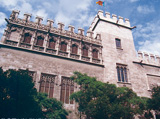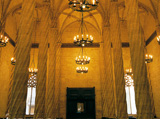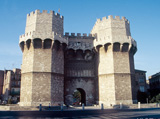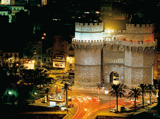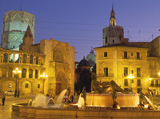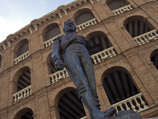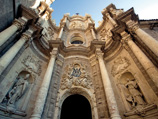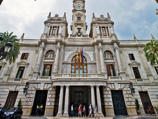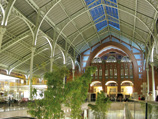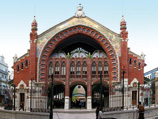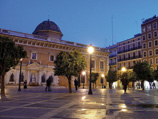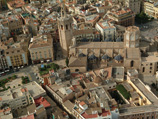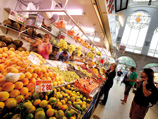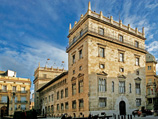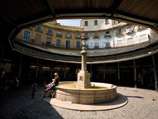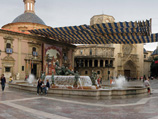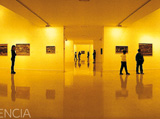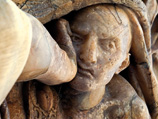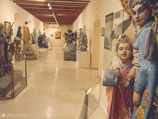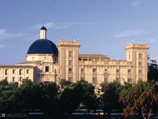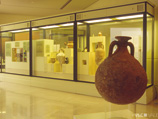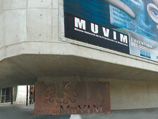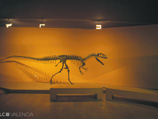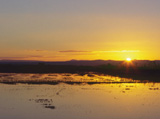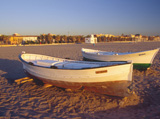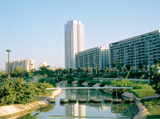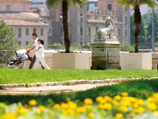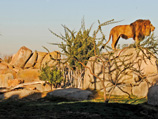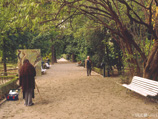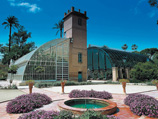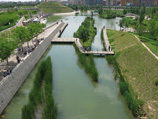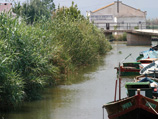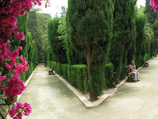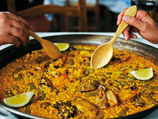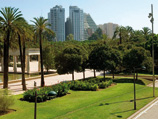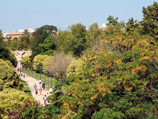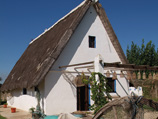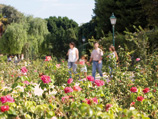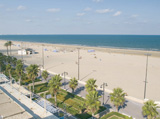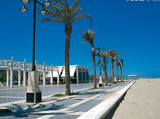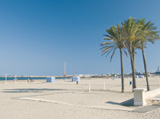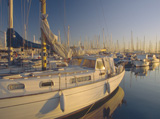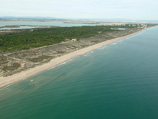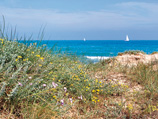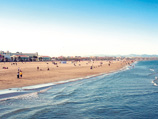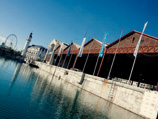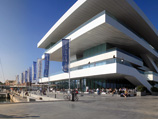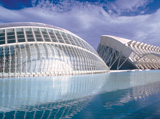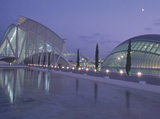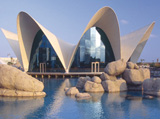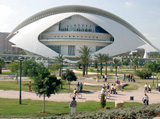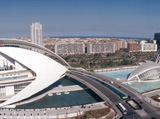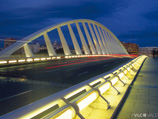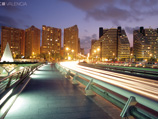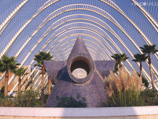City of Valencia
What to see? Valencia & it’s Region
The history of the city is both rich and varied, providing a patrimony that has converted it into one of the major cities in Spain on both cultural and economic levels.
Valencia is now the capital of Valencia Region (Comunidad Valenciana), and has 800,000 inhabitants.
Valencia has become a city of contrasts, a city where the visitor can find a combination of fascinating history and the most modern cultural movements. Its fast urban growth is being complemented by an infrastructure that provides ideal locations for cultural and sporting events, trade fairs and business activities. If we add an almost perfect climate, a superb gastronomic tradition and excellent hotel facilities it is easy to see why Valencia is such an inviting destination for those wishing to take a break, those seeking personal enrichment or for enterprising business people.
For all delegates this will be the perfect time to discover and explore the Valencia Region. We invite you to visit the Official tourism site to assist you in planning any activities during your stay. You can also contact our Technical Secretariat for this purpose. There are several sites you just won’t want to miss.
Enjoy visiting the City of Valencia, a millennial city with lots of places to see and plenty of fiestas to enjoy!!!
![]()
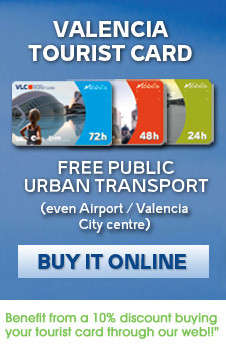

Historical Centre
In the year 1094, Rodrigo Díaz de Vivar, called El Cid Campeador, conquered Valencia on behalf of the Christians, but the city later fell to the Almoravids in 1102. Following the Moorish domination, it was in 1238 that Jaime I of Aragon finally reconquered the city, and founded the Kingdom of Valencia, with its characteristic legislative privileges (Furs).
During the 15th and 16th centuries, Valencia became one of the major economic powers on the Mediterranean seaboard. It was the time of the Valencian “siglo de oro” (Golden Age), which was characterized by splendour in the arts at the hands of Joanot Martorell (author of Tirant lo Blanc, the first modern European novel), Ausias March, Roig de Corella, Isabel de Villena, Jordi de Sant Jordi and Jaume Roig, among others.
During the War of Spanish Succession, Valencia sided with archduke Charles of Austria, and after the victory of the Borbons at the Battle of Almansa (April 1707), Felipe V abolished the local privileges (Fueros). In 1874, Alfonso XII was proclaimed constitutional king at Sagunto city in the north of Valencia.
When democracy was restored, the Region of Valencia was given its present Autonomous Status in 1982 as the “Comunidad Autónoma de Valencia”, that includes the provinces of Alicante, Catellón and Valencia. The history of the city, now the capital of the Region, is both rich and varied, providing a patrimony that has converted it into one of the major cities in Spain on both cultural and economic levels.
Valencia boasts cultural jewels over one thousand years old.
This rich history can be traced in all the city … just take a guided walk tour in the city centre to see all this rich patrimony !
The “Quart” and “Serranos” towers
Originally the former access gates to the city, these are examples of late gothic military constructions which contribute to the city’s unique aspect.
Virgin Square (Plaza de la Vírgen) and the Cathedral complex
Feel the pulse of over 21 centuries of history in the true heart of the city. You will find a wealth of heritage, such as the city’s Cathedral. The Basílica, the Almoina Museum, the Archeological Crypt of Saint Vincent and the splendid places that have served as a seat of regional government since ancient times,
Silk Exchange (Lonja de la Seda)
Enter one of Europe’s most representative gothic buildings, declared World Heritage by the UNESCO. Discover how the building acted as one of the most important commercial trade centres during the middle ages.
Central Market (Mercado Central)
One of Europe’s largest food markets, located inside a building that is a jewel of modernist architecture. Immerse yourself in the scent of local produce, savour the Mediterranean products and enjoy our typical cuisine.
Museums
IVAM
The most avant-guard artistic proposals are to be found in this spectacular building. The IVAM is a new building with galleries designed for permanent and temporary exhibitions. The exhibitions are mainly centred on the evolutionary process of Art, from the classical vanguard crisis right up to the seventies.
www.ivam.es/en
Museum of Fine Arts
The second largest paint artwork collection in Spain, after the Prado Museum. Here you’ll find pieces by artists such as Sorolla, Goya and Zuloaga.
museobellasartesvalencia.gva.es/
MuVIM
The Valencia Museum of the Enlightenment and Modernity. A first-rate museum and provider of culture relating to modernity, where you can enjoy the very best in photography, illustration and poster exhibitions. A place where our journey through history meets the Enlightenment and takes us up to cutting-edge science and architecture of today.
www.muvim.es/
The National Ceramics Museum
An extensive display of both Spanish and international ceramics, alongside collections of decorative art all await you in the Palacio del Marqués de Dos Aguas, a building of great architectural interest and the finest example of Baroque-style design in Spain.
mnceramica.mcu.es/
Almudín
Once a Moorish storeroom for wheat, today this area is a unique exhibition hall. If for nothing else, a look at the murals alluding to the introduction of wheat into the city is well worth a visit.
Almoina Archaeological Museum
Transport yourself back to the time of the Romans or the Moors in this museum. Thanks to its state-of-the-art technology, you can explore the remains of various settlements of different civilisations in Valencia since the year 138 B.C.
Natural Sciences Museum
At the heart of the Viveros Gardens lies this museum, where you can find out more about how our region’s landscapes and ecosystems have evolved over time, as well as seeing the fascinating display of South American palaeontology from the last quaternary
Green spaces
Cabecera Park (Parque de Cabecera) and Bioparc
The most recent of these is the Parque de Cabecera and in its 334,000 square meters we can find the Bioparc. Opened in February 2008, it’s a new-generation natural zoo designed following the zooinmersion concept, with barriers invisible to the eye of the visitor, an open-air space to contemplate animals living as free without leaving the city.
Turia Park (Jardín del Turia)
The Jardín del Turia follows the dried-out former course of the river Turia and has over one million square meters of gardens and sports areas. A magnificent urban landscape composed of bridges dating from different periods and a range of architectural styles that cross the Turia Gardens. Don’t miss the chance to spend a day outdoors in an unique space of nature that crosses the city from one end to the other, strolling at your leisure or enjoying a bicycle ride.
Botanical Garden (El Botànic)
The botanic garden of the Universidad de Valencia, known as El Botànic, was founded in 1567. For 200 years it was a cultivated plot used to grow medicinal plants, linked to studies in Medicine. One of the city’s best-kept secrets, this was the first botanical garden ever created in Spain.
Boasting a large horticultural collection, this garden houses over 3,000 species of tree and plants originating from all five continents of the globe. Currently, the Garden carries out research into plant diversity, conservation of rare, endemic or endangered species of Mediterranean flora and the conservation of natural habitats. Furthermore, there is continuous educational and cultural activity carried out by the departments of education and cultural events and the press office.
www.jardibotanic.org/index.php
Viveros Gardens (Jardines del Real or Jardines de Viveros)
The Royal Gardens or Municipal Gardens are located across the Turia riverbed from the ancient city centre, and once contained the Royal Palace. Originally established by the Arabs, the historic character of these gardens – their amplitude and splendour, the profusion of sculptures, monuments and fountains contribute to make it one of the most outstanding in the city.
Monforte Gardens
A neoclassical garden with an artistic touch; an abundance of statues; ponds; fountains; pathways; pavilions to stop off and rest in all make for an enchanting setting.
Glorieta Gardens
In this, the first park to be created in the centre of the city, marvel at the magnolias and the small, but impressive monuments. A great place to recharge your batteries.
Albufera Nature Park (L’Albufera)
In terms of natural recreational areas we must mention Albufera Nature Park. Located very near to the city centre, this park is among the natural spaces with most environmental and ecological value in Europe. Inside the Albufera you can find the largest lake in Spain which is a natural paradise for many bird species. Don’t miss the spectacular sunset over the waters as seen from a typical fishing boat, or a stroll through the extensive pine forest and dune formations (El Saler) that separate the lake from the Mediterranean sea.
The Albufera was incorporated in the List of Wet Zones of International Importance by the Ramsar Conference in 1990 and declared an Area of Special Protection for Birds and Wildlife by European directive in 1994.
Southern Beaches
Enjoy the extensive seafront next to the Albufera Nature Park. Over 16 km of fine golden sand, bathed by the warm waters of the Mediterranean Sea, make this an idyllic place all year through.
El Palmar
At the Heart of the Albufera we find the village of “El Palmar”, which used to be an island during the 14th century. Visitors can taste typical Valencian dishes, such as paella, arroz a banda (sea food rice) and much more!
www.albufera.com/
Beaches
Seafront Promenade
This 7 km promenade links northern coast beaches, known as the “Malva-rosa” and “El Cabanyal-Arenas”. This have received the highest environmental awards. The average 19ºC temperature allows visitors to enjoy the beaches and the great variety of prestigious restaurants located along the promenade, at any season.
El Cabanyal Beach (Las Areans)
Just a few minutes out of the city centre you’ll find the Arenas beach, with its breathtaking Paseo Marítimo, where you can enjoy an authentic Valencian paella, or some seafood tapas. Beside this beach is where the Hotel Las Arenas is located. It’s the ideal location for those who want a little bit of peace and quiet.
La Malvarrosa Beach
Located towards the north of the Arenas beach, its sheer size and fine sand make it the beach to be at. On this beach, you’ll find the recently restored Casa-Museo de Vicente Blasco Ibáñez, which will transport you back to the time when this home-grown writer walked the streets of Valencia.
Pinedo Beach
At the edge of town, to the south of the Port and the Pinedo Club Náutico lies this beach. A traditional hub for fishermen and farmers, it is equipped with public amenities as well as restaurants and entertainment venues stretching as far as the second jetty of the Paseo Marítimo.
L´Arbre del Gos Beach
Situated on the outskirts of the city, this beach touches the outermost dunes of the Albufera Nature Park. There is a promenade with a cycle track that is ideal for long bicycle rides, roller-skating or a taking a stroll.
El Saler Beach
This Beach is found right at the heart of the grassy La Dehesa and El Saler Nature Park. This long sandy stretch is sheltered from westerly winds by a large clearing of pine trees, helping to conserve the natural dunes and vegetation.
La Devesa Beach
In the middle of the El Saler Nature Park you’ll find this unspoiled beach, surrounded by a natural environment with a rich ecosystem allowing all kinds of vegetation to grow around its marshes and lagoons.
Juan Carlos I Royal Marina
Don’t leave Valencia without visiting this luxury leisure port created for the 32nd America’s Cup and the spectacular setting of the F! Grand Prix of Europe. Unforgettable evenings in a unique seafront setting presided by the majestic Veles e Vents building (created by prestigious architects David Chipperfiels and Fermín Vázquez).
The architectural vanguard
Valencia has witnessed an urban development that has included projects that have generated architectural interest at a national and international level, some examples are: Santiago Calatrava’s Ciudad de las Artes y las Ciencias (City of Arts and Sciences), Norman Foster’s Palacio de Congresos (Conference Centre), Jean Nouvel’s city sea front for the 32nd Americas Cup, the IVAM (Valencia Institute of Modern Art) by Kazuyo Sejima and Ryue Nichizawa and José María de Paredes’ design for the Palau de la Música (City Concert Hall).
But the city’s development has not only been about the construction of new focal points; it has also been about making the best use of all resources – as much the existing arts centres, museums and monuments as the new buildings – for cultural events, conferences and business activities and in this way increasing the options and the possibilities that the city has to offer.
City of Arts and Sciences
Enter one of Europe’s major cultural and leisure complex that has become an international landmark both for it’s architecture and it’s ability to entertain. You will enjoy art, science and nature all in one !
The complex is formed by:
- Palau de les Arts Reina Sofia
A pioneering centre where the best opera, dance and theatre shows are held. - L’umbracle
A spectacular garden promenade with views of the entire complex. - L’Hemisfèric
A breathtaking building that represents a humaneye. It houses a large sphere that forms the largest film auditorium in Spain. - Science Museum Príncipe Felipe
An interactive space in which science gets closer to the public in an accessible and participative way. - L’oceanogràfic (Aquarium)
An impressive water space of marine life where you can submerge yourself and discover the beauty of our planet’s primary seas and oceans. Nine thematic habitats featuring awe-inspiring design, the latest technology and 42 million litres of water!

